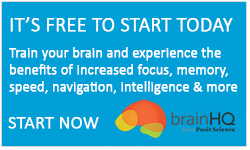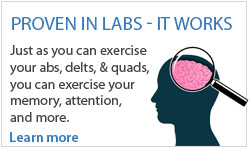Summary: Memory Series

Over the past few weeks, we’ve touched upon some of the key areas relating to the expansive field of memory. At its most basic level, memory is arguably the single most important skill we have as it defines our sense of self and who we are. Keeping it sharp throughout our lifetimes and especially for the period where we reach the golden years is an ongoing challenge that we need to pro-actively face head on.
We remember that there is an urgency to address brain health issues as the Alzheimer’s Society of Canada projects that the number of Canadians impacted by dementia is expected to nearly double from the current 747,000 to 1.4 million Canadians by 2031. With the incredible strides made in the field of neuroplasticity over the past few decades, we’ve also discovered that there are many steps we can take on our own to prevent cognitive decline, reclaim the loss, or possibly, even delay the onset or progression of a dementia type diagnosis.
Memory Types
In the memory types blog, we reviewed the different types of memory, such as short and long term, while also exploring in further depth how long-term memories have consolidated in our brains. Taking a stroll down memory lane showed us just how this is done: Find out now.
Memory Formation
In the memories formation section we learned that memories are made up of what we sense, and primarily so from the field of visual and auditory stimuli that we are exposed to. Our cerebral cortex performs a crucial role in the perception and processing of that information. National Geography - interactive memory map. As the brain processes new information, the synaptic structures in the brain actually change form to reflect the new data being absorbed. In doing so, the brain reaffirms its plasticity nature as an organic element that continually changes and adapts to our sensorial experiences.
In this light, as we actively strive for optimal cognitive health, it is natural for us to become more selective with the type of information we expose and freely subject ourselves to. Scientifically proven brain training is a key step in that direction!
Memory and Stress
The key take-away from the memory and stress blog was that stress represents a form of interference with our memories and that we cannot possibly forget something was not first properly encoded. Ultimately, if we want to improve our memory, it is imperative that we first start by reducing the negative stress that we are exposed to on a daily basis. Once that negative stress is under control, we can take steps to improve our attention and our memory. Here are some specific brain exercises one can take to help achieve those goals:
How to Improve your Memory
In the how to improve your memory blog, we examined the scientific basis that clearly positions the BrainHQ training program in a class of its own and allows it to deliver exceptional results. The irrefutable evidence is based on 70 peer-reviewed studies and the largest landmark study ever conducted to test the effectiveness of a widely available, cognitive training program: the Mayo Clinic IMPACT Study and ACTIVE Study.
We trust this memory series blog has been of value to you and look forward to having you join us as we start a new series focused on the brain and technology.
DynamicBrain Inc. is the Canadian Partner of Posit Science Corporation providing brain fitness program, BrainHQ in English and French.






 English
English
 Français
Français



